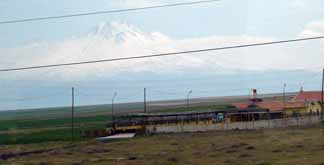
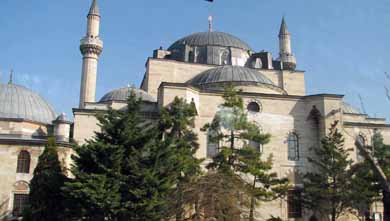
Antalya


The Seljuk Mansion
It was built during the reign of Sultan KiliÁ Aslan II (1156-1192) and it was repaired and expanded during the reign of Sultan Alaeddin Keykubad II. Its other name is Alaeddin Mansion. The walls of the mansion which was built having two stories, were decorated with patterns of encaustic tiles.


This next mosque has a rounded top which is unusual. In addition, it has beautiful stonework around the doors.
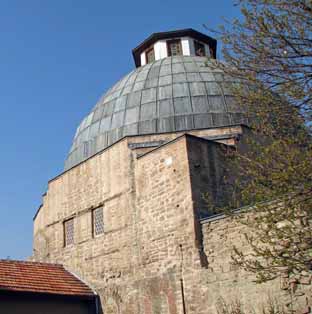

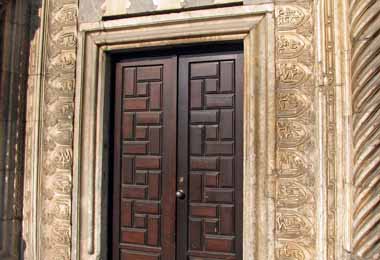
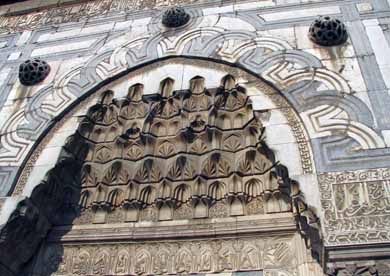

This next mosque has an exceptionally unusual minaret made of wood - very beautiful.

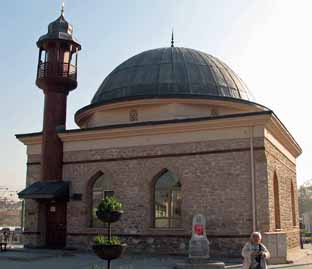
Ince Minaret Medrese (literally, the
medrese with the narrow minarets a 13th century medrese (Islamic school)
located in Kona, Turkey and built
between 1258-1279 by the Anantolian Seljuk Sultanate vizier S‚hib Ata Fahreddin
This unusual mosque is famous for its tiled minaret - a turquoise color, and the exceptional stone work on the towers and around the entrances.
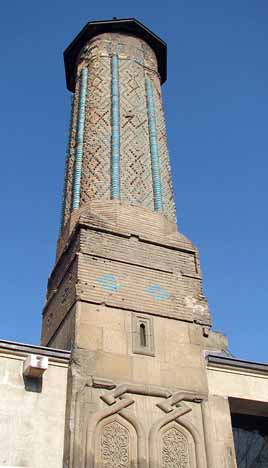



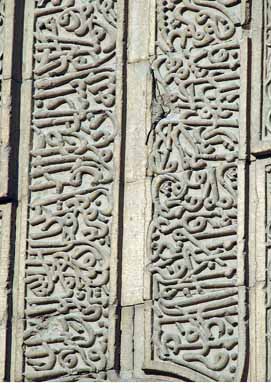
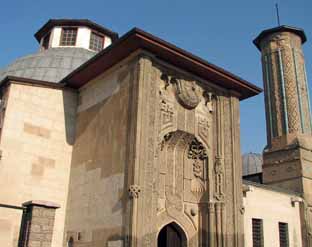
KONYA
Kona
is a city which has protected its name for centuries. Legend says that Perseus
killed a dragon that had been ravaging the town. The people set up a special
monument to honor him, a stone obelisk with an icon of Perseus carved in it.
This event gave the city its name, Ikonyon, Ikonyum, Iconium.
However,
among Muslims another legend is told. Two dervishes, friends of Allah were
making an excursion through the skies from the far away countries of Horasan
toward the west. When they flew over the lands of central Anatola, one asked the
other, "Shall I land?" ("Konayim mi?"). The other answered,
"Sure, land." ("Kon ya!") So, they landed and founded the
city of Konya.
Konya
is an important place for Christians as well because St. Paul and St. Barnabas
came to the city on one of their journeys in Asia Minor around 50 AD. St. Paul
preached in Konya but they angered both Jews and Gentiles so they had to leave
the city and went to Derbe and Lystra.
Rumi , the great Sufi poet (1207-1273),is also well known for the Sufi brotherhood he established with its distinctive whirling and circling dance, known as Sema and practiced by the Dervishes. The Sema ceremony, in seven parts, represents the mystical journey of an individual on their ascent through mind and love to union with the divine.
Rumi passed away on the evening of December 17, 1273, a time traditionally known as his 'wedding night,' for he was now completely united with god. In the centuries following Rumi's death, many hundreds of dervish lodges were established throughout the Ottoman domains in Turkey, Syria and Egypt, and several Ottoman Sultans were Sufis of the Mevlevi order. During the later Ottoman period, the dervishes acquired considerable power in the sultan's court. With the secularization of Turkey following World War I, the Mevlevi Brotherhood (and many others) were seen as reactionary and dangerous to the new republic, and were therefore banned in 1925. While their properties were confiscated, members of the Mevlevi Brotherhood continued their religious practices in secret until their ecstatic dance were again allowed in 1953.
The former monastery of the whirling dervishes of Konya was converted into a museum in 1927. While the dervishes have been banned from using this facility, it functions as both museum and shrine. In its main room (Mevlana Turbesi) may be seen the tomb of Mevlana covered with a large velvet cloth embroidered in gold. Adjacent to Rumi's burial is that of his father, Baha al-Din Valed, whose sarcophagus stands upright, for legends tell that when Rumi was buried, his father's tomb "rose and bowed in reverence." The tombs of Rumi's son and other Sufi sheikhs are clustered about the shrine. The burials of Rumi, his father and several others are capped with huge turbans.
The
Shrine of Jalaluddin Rumi, Konya
As seen in the paragraph above, the Shrine is now the Melvana
or "Dervish" Museum
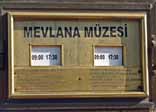
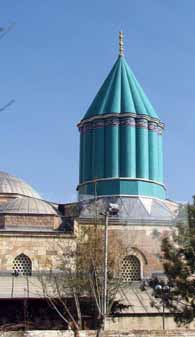

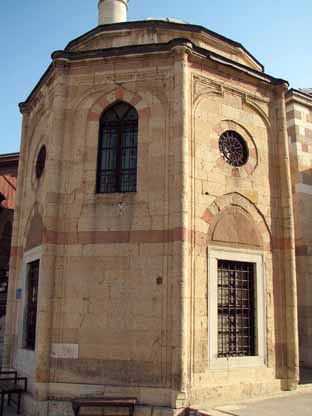
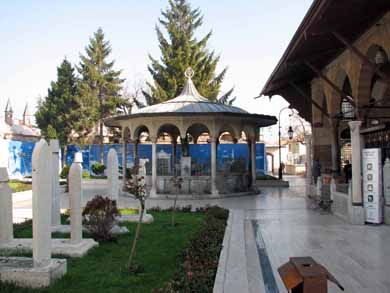
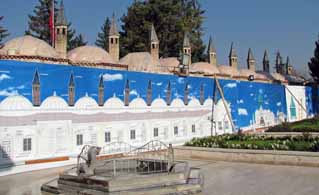
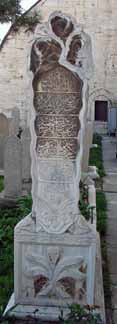
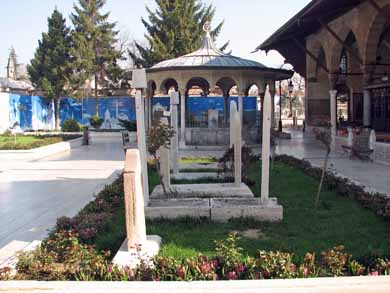
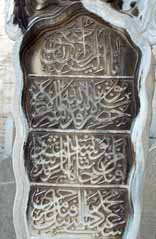
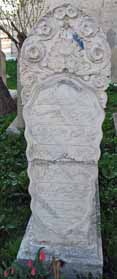
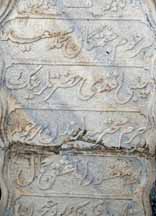




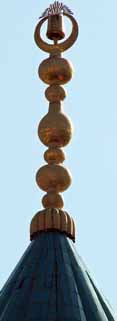
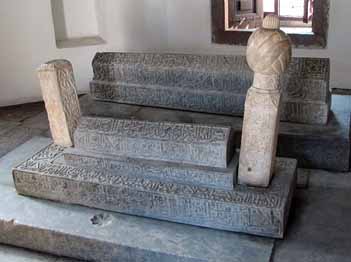
CARAVANSERAIS (KERVANSARAYS) OF CAPPADOCIA
Protecting the Silk Road
Caravanserais have been used since the 10th century. Trade across Turkey in medieval Seljuk times was dependent on camel trains (kervan, anglicized as caravan), which stopped by night in inns known as kervansaray or caravanserai , literally 'caravan palaces'. These buildings provided accommodation and other amenities for the merchants and stabling for their animals. Caravanseraies were first seen in Central Asia during the times of Caravans, Ghaznavids and the Great Seljuk State. They were building fortresses called "Ribat". These buildings, first constructed as small buildings for military uses were later developed and changed into larger buildings and were used for both religious purposes and as inns for travelers.
In caravanserais, foreign
as well as native traders, would be put up for three days. Their shoes would be
repaired or the poor would be given new shoes. The ill would be treated and
animals would be tended and, if needed horses would be shoed. For their
religious practices, they would use the "Kosk Mescid", a small mosque,
in the center of the courtyard. The "Kosk Mescid", usually located in
the centre of the courtyard, was the most important part of the caravanserais.
These mosques were normally built on an arched base.
The courtyards are normally surrounded with bedrooms, depots, bath house and
bathrooms. "Mangals" (braziers) or "tandirs" (oven in the
ground) were used to heat the places whereas candles and lamps were used for
light. All services were provided by the people working in caravanserais; e.g.,
doctor, imam (prayer leader), depot officer, veterinarian, messenger,
blacksmith, and cook. Stones cut from the volcanic rock were used in the
construction of the caravanserais in the region of Cappadocia. For defense
purposes, their walls were constructed like castle walls. Some of the best
examples of Seljuk stonemasonry can be seen at the entrances, called "Tac
Kapi". Although dragon, lion motifs and floral designs most
frequently used, in Cappadocia geometrical designs were generally preferred. The
doors were made of iron.
Caravanserais were built along roads running from Antalya - Konya -
Kayseri to the land of Turkomans passing through Erzurum and Tabriz and from the
Black Sea region to Iraq via Amasya - Tokat - Sivas - Malatya - Diyarbakir at a
distance of 30-40km, a one day camel trek.
Caravanserai of Agzikarahan
The next caravanserai (kervansaray) located on this route, 15 km outside Aksaray on the Nevsehir road, is Agzikarahan (Black Mouth), which bears the same name as the village where it is situated. It is alternatively known as Hoca Mesud Kervansaray, after its founder. The first of its two inscriptions tell us that its construction was commenced in 1231 by a wealthy merchant named Hoca Mesud bin Abdullah and completed in 1239. The hall was built during this time by Alaaddin Keykubat I and the courtyard by his son Giyaseddin Keyhusrev II (1237-1246). With its great portals, pavilion mosque, towers and other architectural features, this caravanserai is reminiscent of the castle-like royal hans (Sultanhani). The pavilion mosque is raised upon a four arched sub-structure and stands in the middle of the courtyard, which is surrounded by colonnades and closed rooms.

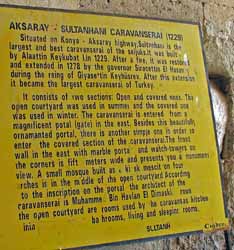


The large entrance doors and elegant carving
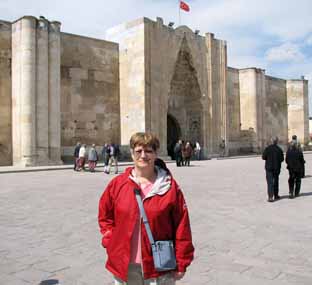
The entrance hall beyond the large doors - the single place / method to enter.
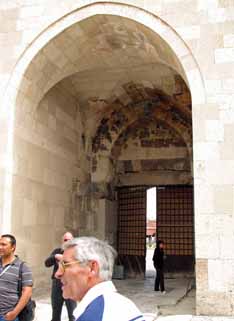
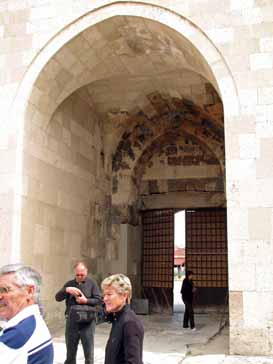
Steps leading up the the top of the wall

Along the left side of the courtyard were rooms for the visitors.
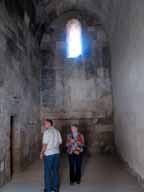

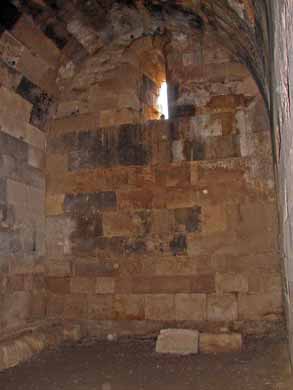
A mosque stood in the center of the courtyard, with an entrance at the top of the stone steps in the rear.
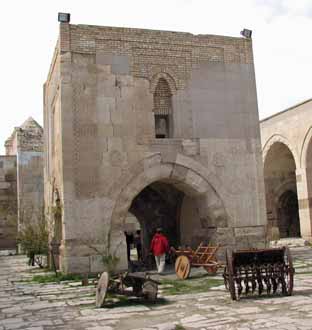
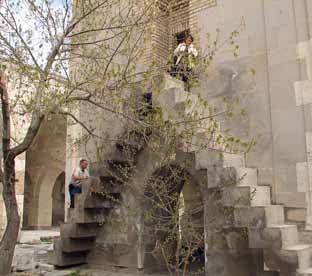

Along the right side of the courtyard were storage areas. In one we saw this old cradle.
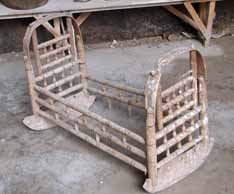
In the rear were the rooms for the camels and animals. We thought they were cleaner, brighter and better built than the rooms for the travelers.
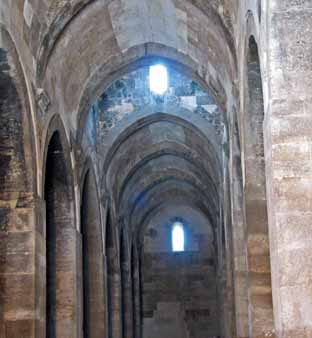

This arch in the center of the animal storage area was particularly attractive.
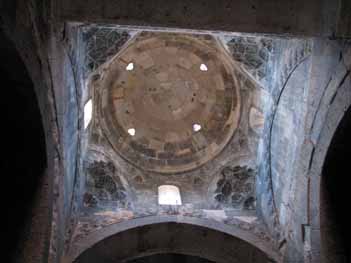
Again the stairs to the top of the walls, and a close up of the carvings at the door - with just faint color still remaining.

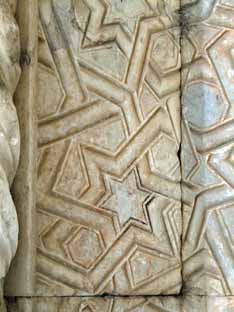
On the Road to Cappadocia
Scenes at comfort stops and from the bus as we travel to Cappadocia
A small town
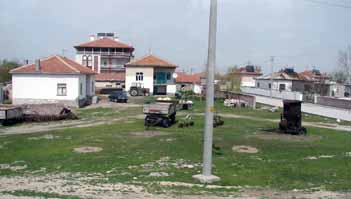
Views along the road - isolated homes and small villages


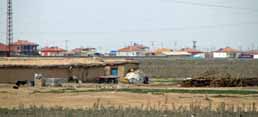
Hill sides

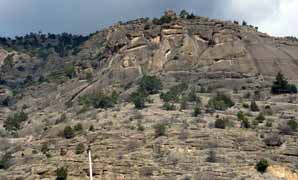
Hills in the distance

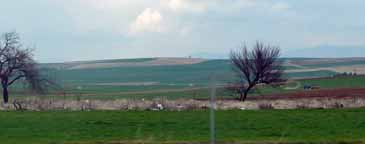
Starting to see mountains in the distance
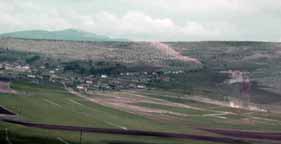
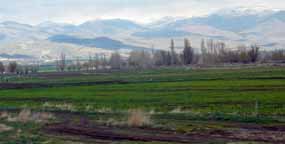
A well used to feed stock and for watering fields

Mosques everywhere along the way - at least one per town / city
all built by the government. The government issued mosques have a single minaret, and any additional minarets are paid for by the people.
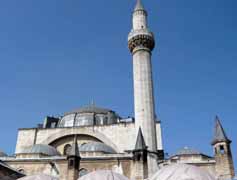
In the background - and they were virtually impossible to photograph from a moving bus - are seen the first of the famous volcanoes of Cappadocia. Without there volcanoes, Cappadocia would not have its world-wide fame.
